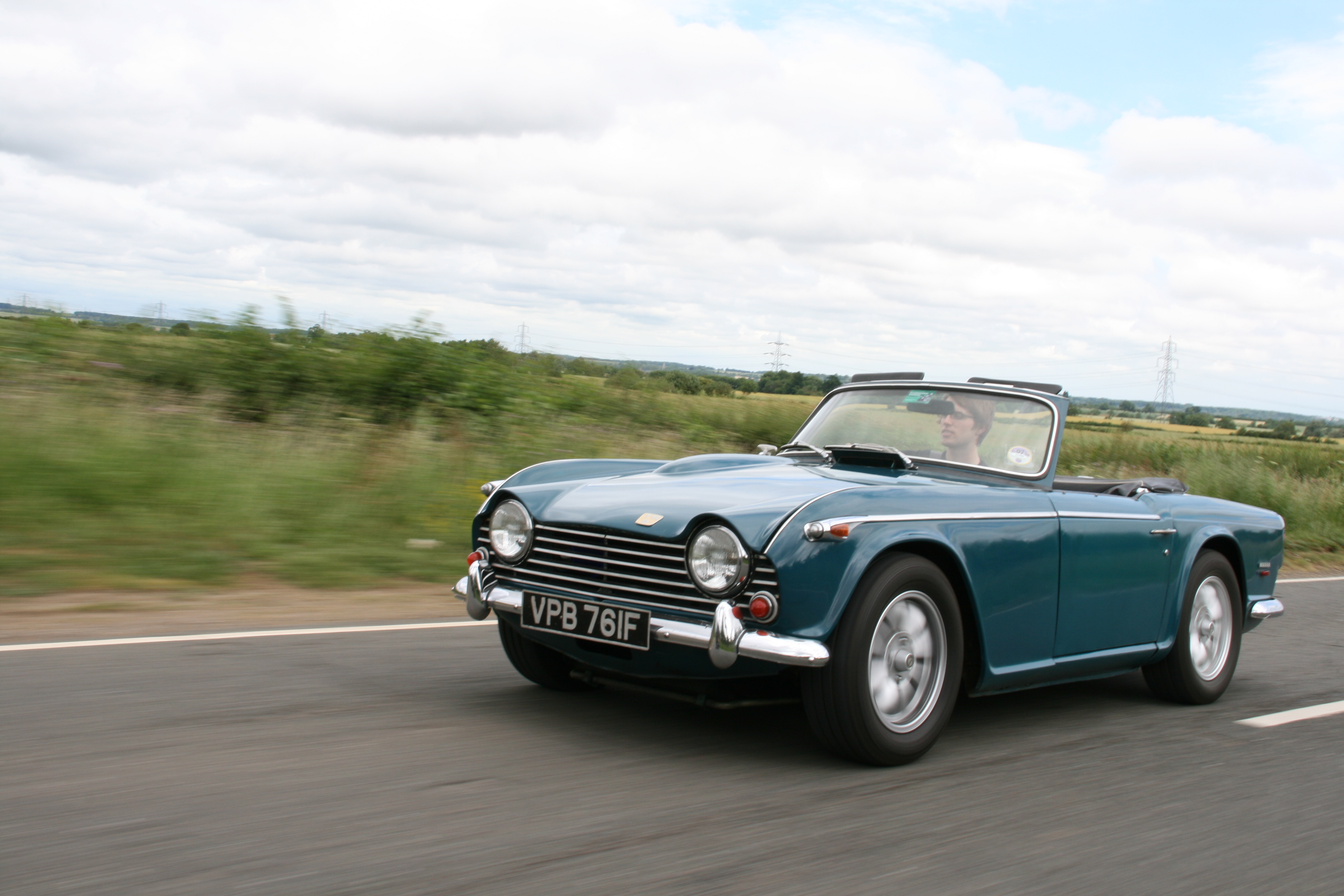-
Insurance
InsuranceAbout our productsLearn about insuringGet a quote Get current values, historical values, model history and more.
-
Valuation
ValuationHagerty valuation toolLook up a vehicle value Get current values, historical values, model history and more.
-
Events
EventsHagerty official eventsHagerty ClubhouseEvent calendar
-
Entertainment
EntertainmentMore to explore
- Portal login
1967 Triumph TR5
Base Convertible 2.5 L
Vehicle values by condition
Fair
Condition 4
£17,300
#4 cars are daily drivers, with flaws visible to the naked eye. The chrome might have pitting or scratches, the windshield might be chipped.
Good
Condition 3
£29,800
#3 cars could possess some, but not all of the issues of a #4 car, but they will be balanced by other factors such as a fresh paint job or a new, correct interior.
Excellent
Condition 2
£39,400
#2 cars could win a local or regional show. They can be former #1 cars that have been driven or have aged. Seasoned observers will have to look closely for flaws.
Concours
Condition 1
£56,200
#1 vehicles are the best in the world. The visual image is of the best car, unmodified, in the right colours, driving onto the lawn at the finest concours.
Insurance premium for a
1967 Triumph TR5 Base Convertible 2498
valued at £29,800
£196.82
/ year*
History of the 1967 - 1968 Triumph TR5

1967 - 1968 Triumph TR5
The Triumph TR5 is a two-seater convertible produced from 1967 to 1968.
The Triumph TR5 looked much the same as the Triumph TR4A, barring some minor details, and it shared its predecessor’s front double wishbones and coil springs and rear semi-trailing wishbones and coil springs independent suspension but the engine was a 2.5-litre straight-six OHV engine, fitted with Lucas mechanical fuel injection.
Triumph commenced production of the TR5 in July 1967 and for the first time on a TR, there was no starting handle bracket. The brakes (front discs and rear drums) were improved with a vacuum servo and the cabin reflected the recent US safety regulations with recessed switches and concealed hood catches. There were also improved seats and electric windscreen washers.
As with the TR4A, the Triumph TR5 was available in soft top (£1,212) and hard top (£1,255) forms and options included wire wheels and overdrive. The Triumph accelerated from 0-60 in 8.8 second and the top speed was 117mph from the 150bhp engine that Motor described as a ‘truly magnificent power unit’; the TR5 was the first British fuel-injected production car.
Strict emissions controls in North America meant that the TR5 was never formally available in the USA and instead, Triumph offered the TR250 fitted with twin carburettors and some bonnet decals. At 104bhp, this was less powerful than the British market version and the top speed was 109mph but the TR250 considerably outsold the TR5 – 8,484 units as opposed to 2,947.
The TR5 and the TR250 were both replaced by the Triumph TR6 in September 1968.
Power from the TR5 and the TR250 was from a 2,498cc S6 OHV engine, the latter having twin Stromberg CD175 carburettors. The transmission was a 4-speed all-synchromesh gearbox with optional Laycock de Normanville overdrive for the top three ratios.
Perhaps the Triumph TR5 is best described as the TR4A intensified; to many drivers, the ride seems firmer and the tendency of the stern to dip and the bows to rise under hard acceleration even more pronounced. The TR5 may also feel heavier but it really does sound as good as it looks.
The TR5 suffers from many of the body/chassis challenges of the TR4A and in terms of the engine, one of the unit’s most notorious problems was fuel vaporisation when the plant was hot. Other challenges can include misfiring and difficulties in starting.
More than a ‘stop-gap’ model before the introduction of the TR6, the Triumph TR5 is a prime example of how ambitious Triumph was in the 1960s as they constantly refined their model range. And a TR5 fitted with overdrive is an exceedingly pleasant tourer.
The Triumph TR5 competed against the MGC and the late-model Sunbeam Tiger. A coupe rival was the 2.5-litre Reliant Scimitar GT.
Hagerty Newsletter
Get your weekly dose of car news from Hagerty UK in your inbox

ADVERTISEMENT